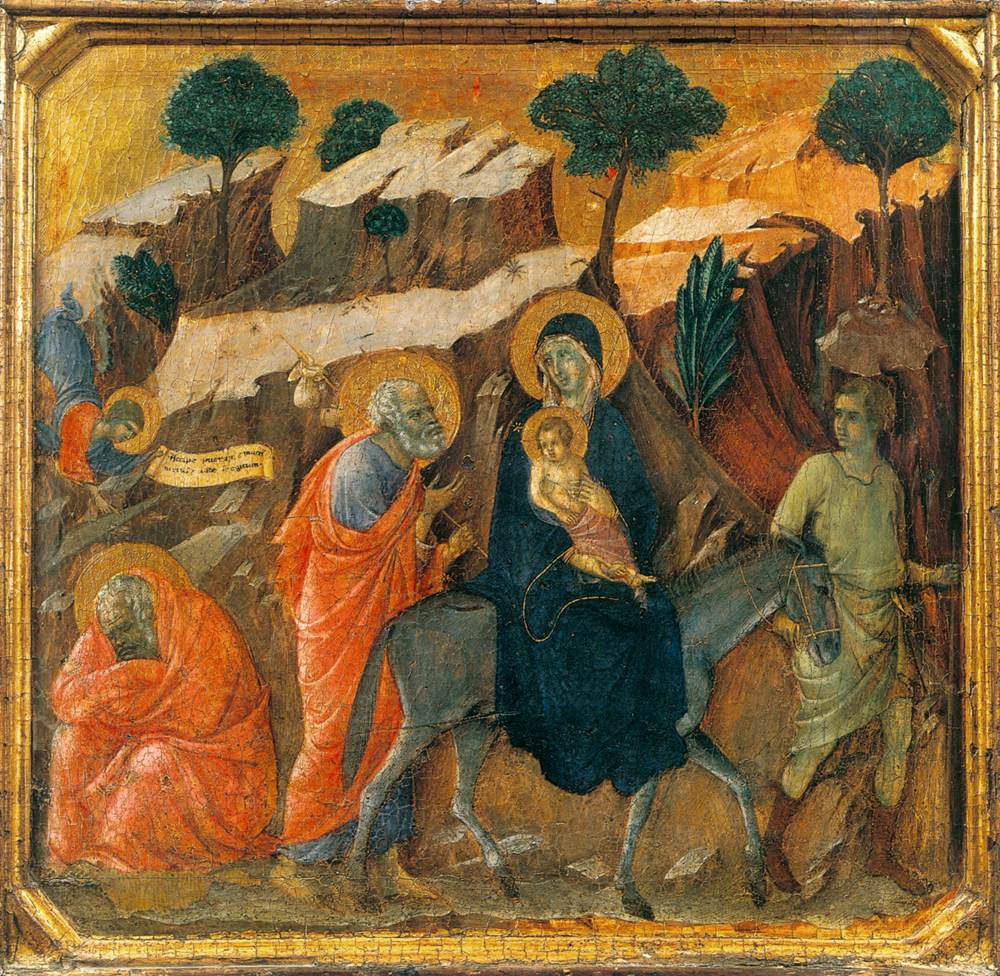Description
The painting Flight into Egypt (scene 6) by the Italian artist Duccio Di Buoninsegna is a masterpiece of medieval art noted for its unique artistic style and complex composition. The work, which measures 43 x 44 cm, represents the flight of the Holy Family to Egypt, after King Herod ordered the slaughter of all male children under the age of two in Bethlehem.
One of the most interesting aspects of this painting is its artistic style, which combines elements of Byzantine and Gothic art. Duccio, one of the leading exponents of Sienese art, uses a highly detailed and painstaking painting technique, with great attention to detail and a rich color palette. The work is replete with religious symbols and allegories that reflect the complexity of the biblical story.
The composition of the painting is equally impressive, with a large number of characters and scenes that are intricately intertwined. The Holy Family travels through a mountainous landscape, while angels protect and guide them. At the bottom of the painting, a group of bandits can be seen trying to attack the family, but they are stopped by divine intervention.
Color is another highlight of this work, with a rich and vibrant palette that includes warm and cool tones. The details of the characters' clothing and accessories are painted with great precision, adding a sense of realism to the scene.
The history of the painting is also fascinating, as it is believed to have been created around 1308-1311 for the altarpiece of the Siena Cathedral. The work has undergone numerous restorations and has suffered damage over the centuries, but it still retains its beauty and ability to captivate viewers.
In summary, the painting Flight into Egypt (scene 6) by Duccio Di Buoninsegna is a masterpiece of medieval art that stands out for its artistic style, its complex composition, its rich color palette and its fascinating history. It is a work that continues to captivate viewers today and is considered one of the most important pieces of Sienese art.

